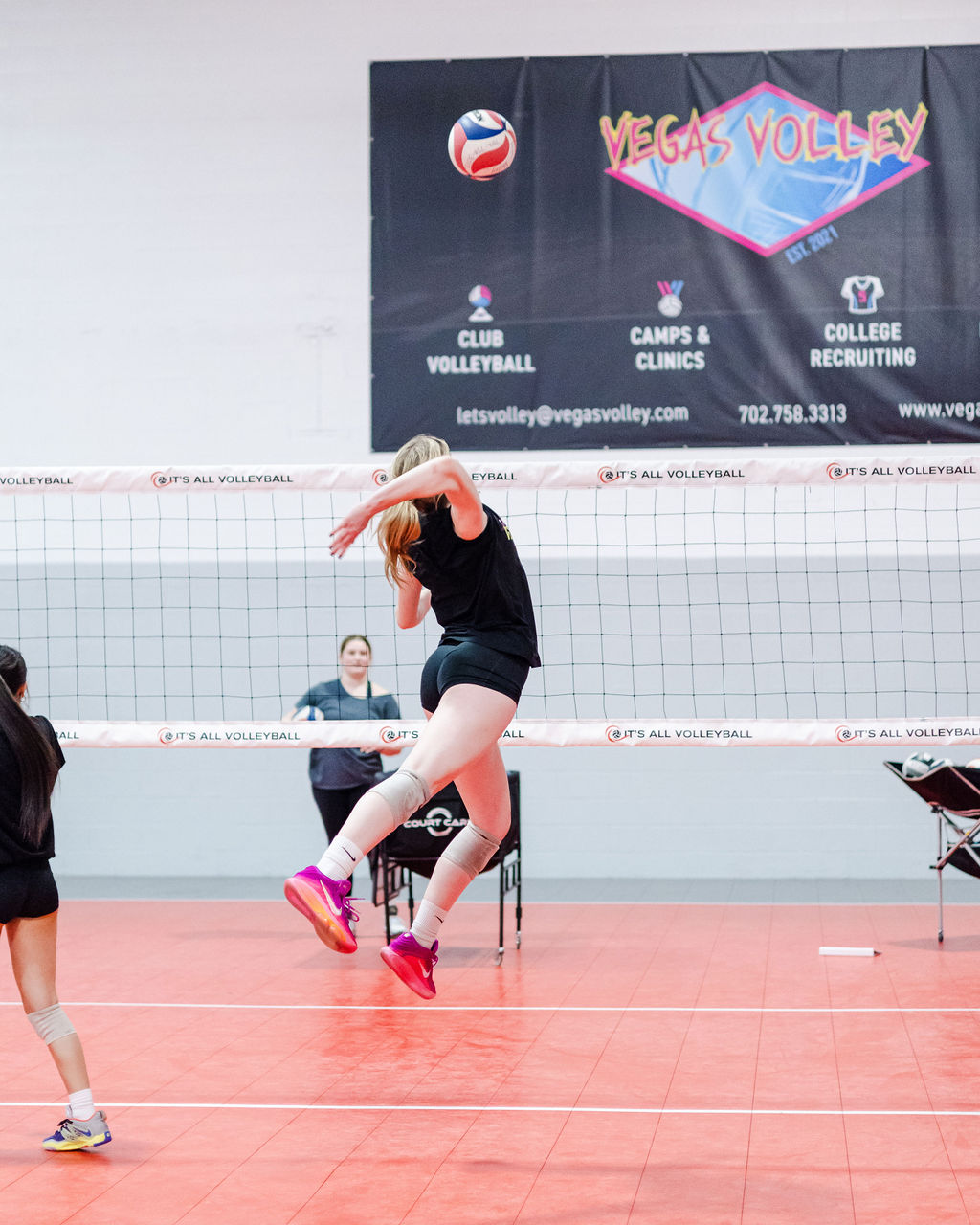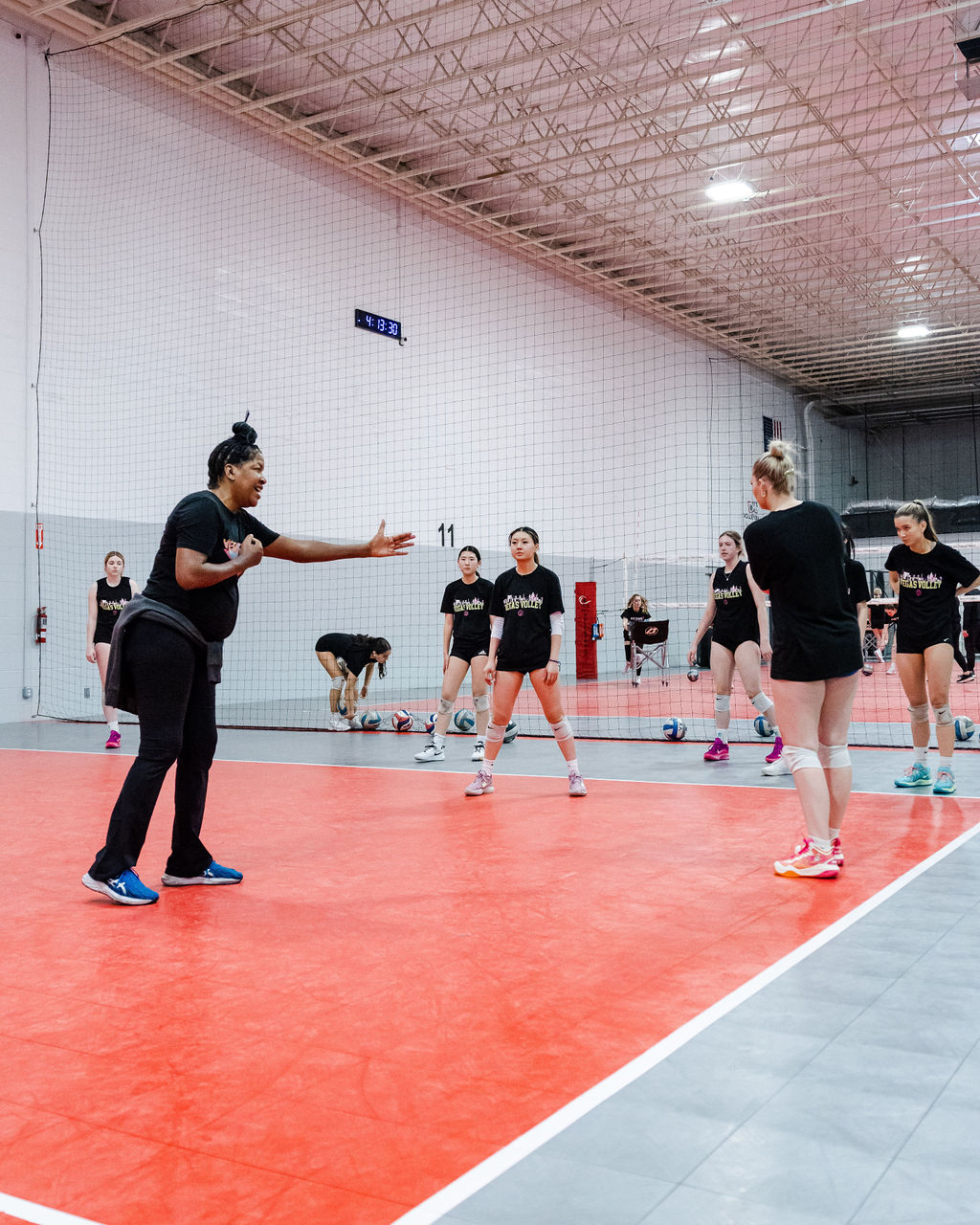- Improve Your Volleyball with Coach April
- Best Volleyball Drills
- Transition Drills For Volleyball Players
 Dear Volleyball Mom,
Do You Know What Sets My Private Volleyball Training Apart From Anyone In Vegas?
I invite You to read what my private volleyball training mission says before considering hiring me as a private volleyball coach because I'm not available for everyone.
Dear Volleyball Mom,
Do You Know What Sets My Private Volleyball Training Apart From Anyone In Vegas?
I invite You to read what my private volleyball training mission says before considering hiring me as a private volleyball coach because I'm not available for everyone.Transition Drills For Volleyball Players To Go From Offense To Defense
Watch how quickly these transition drills for volleyball hitters help you become a better front court player who can go from offense to defense in a rally.
Volleyball transition occurs when your team is on defense and digs a ball that stays on your side in a rally now your team "transitions" from being the team on defense to being the team on offense.
Once a rally starts with a serve, the serving team is on defense and the team that receives the serve is on offense.
When the ball goes over the net the roles of the teams change, so now the team that just served gets a chance to attack so they're on offense.
Transition Drills For Volleyball Help Prepare You For What Happens After Your Team Digs A Ball
In a rally, after a team serves, the serving team is on defense and the team who is receiving the serve is on offense.
The team on defense has three blockers in the front row who will try and stop the opposing team's attack hit at the net by blocking the ball before it comes over the net.
If the blockers can't block it then the three players on defense in the back row, also called 'diggers' or 'defensive players', will use their defensive skills to dig the ball up to keep it off the ground so the opposing team can't score a point.
On defense, the block is the first line of defense for a team and the dig is the second and last line of defense for a team to try and keep an opposing team's attack hits from scoring points by keep the ball off the floor.
When your team blocks, you are defending your court at the net, and if the ball gets by the block, then your back row players. also known as 'diggers', defend your court by digging the ball up into the air so it doesn't hit the floor.
The minute your team digs a volleyball up and the ball stays on your side your team changes or "transitions" from being a team on defense to becoming a team on offense.
Your team keeps the opposing team's attack off your floor, but you've also set your team up to run an offensive attack sending the ball into the opposing team's court.
Now its their turn to try and block your team or dig a volleyball up that you or your attackers send into their court to try and score a point.
That's how volleyball transition works.
Watch how these transition drills for volleyball help hitters become faster better point scorers
Usually freshmen and JV high school volleyball team players transition slowly because the speed of the game is alot slower.
The ball goes back and forth in each rally alot higher above the net and at a slower pace.
Transition Volleyball Drills: Four vs Four No Middle Blocker Games To 7, 9 or 15
As players move on to the next level the speed of the game increases because players have learned to move quickly with faster foot speed and lower faster sets go from their positions in offense to their positions in defense a lot faster.
Transition Drills for Volleyball: Four vs Four No Middle Blocker Games To 7, 9 or 15
I love this four vs four transition volleyball drill with no middle blockers.
4 vs 4 no middle #volleyballdrill
On the court with BYU (Kate Prior), Univ of Conn (Brooklyn), Arkansas Tech (Sisi Orton) , Vanguard (Kenny Buen), Carleton , GU (Cass Nyi) and four Nevada state champions…
Do You Follow Me on Pinterest?
 Private or semiprivate volleyball indoor/sand lessons are an excellent way for young Las Vegas high school volleyball players to quickly improve their individual skills through a private or semi-private coaching experience.
These lessons are conducted by former pro volleyball player, former USA Volleyball High Performance instructor and Evaluator and Tstreet Vegas 18s head Coach April Chapple on a weekly basis.
Sign up now!
Private or semiprivate volleyball indoor/sand lessons are an excellent way for young Las Vegas high school volleyball players to quickly improve their individual skills through a private or semi-private coaching experience.
These lessons are conducted by former pro volleyball player, former USA Volleyball High Performance instructor and Evaluator and Tstreet Vegas 18s head Coach April Chapple on a weekly basis.
Sign up now!Follow me on Pinterest Volleybragswag to improve your game even faster!
I share alot of individual, partner and easy-to-do volleyball serving drills we do in class with my followers.
Many of these volleyball practice drills you can do at home by yourself or try at your next practice with your teammates.
If you're a B team or JV player trying to make varsity next year...your goal should be to complete 1000 reps a day of at least three of the basic skills on your own...volleyball passing, serving and setting should be at the top of the list.
Best Volleyball Drills:
Where Do You Go From Here?
Your three options are:
- You can learn more about Drills by visiting the Related Links below.
- Follow the suggested reading on our Sitemap page Learning How To Play (Sitemap)
- Or visit the pages in the How to Play Volleyball section in the drop down menu at the top of the page to get started.
SUSCRIBE
To My Email Newsletter Below!
From Lady Vol to Legend: Coach April Produces Powerful Passionate Players...is that you?
What Are You Looking For?

Hi there!
Thanks for stopping by. Hope you learned something today that will help you reach your volleyball goals.
Be sure to subscribe to my email newsletter so you can learn more each week!
Stay strong! Stay motivated!
-Coach April

SUSCRIBE
to my email newsletter below!
Vegas Volleyball's Unsung Heroes: Celebrating Moms with Peace Love Volleyball Shirts
Ready to energize your volleyball mom journey?
Subscribe to my 'Producing Powerful Passionate Peaceful Players' email list above on ImproveYourVolley.com.
You'll receive energy-boosting tips, exclusive insights from me, Coach April Chapple on maintaining momentum in volleyball.
Let's power up the Vegas volleyball scene together!
Recent Articles
-
Volleyball Partner Passing Drills You Can Do To Improve Ball Control
Apr 21, 25 12:42 AM
These volleyball partner passing drills we do in Boot Camp classes are drills you can do at home in order to improve your consistency and ball control skills. -
The Volleyball Pepper Drill: Partner and Three Player Pepper Drills
Apr 19, 25 02:04 PM
The volleyball pepper drill is a ball control drill using setting, digging and hitting skills usually done as a partner or three player person drill in warmup. -
Best Volleyball Drills For Setters, Hitters, Liberos, Passers Blockers
Apr 19, 25 04:08 AM
Best volleyball drills are essential exercises in the learning process for players to improve your serving, hitting, passing, spiking, setting, blocking skills.



































